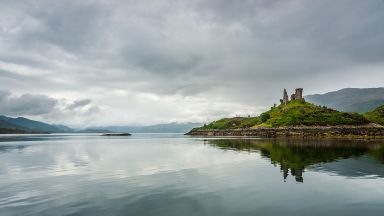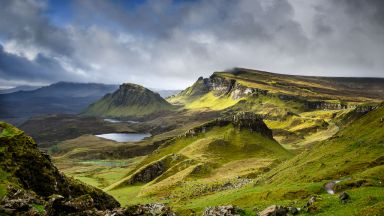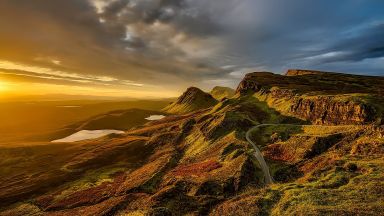Caithness: The Complete Guide
Caithness is located on the most north eastern part of mainland Scotland, and serves as the most northern county in Britain to still claim royal connections. It is a roughly triangular shape, bounded to the south and west by Sutherland, and to the north by the Pentland Firth. The vast open landscape, relatively flat, also known as the flow country, is rich in archaeological remnants of a bygone age. There are notable mountains in the south-west corner, including Morven, the highest peak in the region. The geological features of the Caithness coastline feature soaring sea stacks, raucous colonies of sea birds, and vertically faced headlands jutting out into the wild waters of the Pentland Firth. Across the Pentland Firth, ferries link Caithness with Orkney, and Caithness also has an airport at Wick.
Almost all settlement are along the coast, with the major towns being Wick, on the North Sea coast, and Thurso, in the north.
The Caith element of the name Caithness comes from the name of a Pictish tribe known as the Cat or Catt people, or Catti (see Kingdom of Cat). The -ness element comes from Old Norse and means “headland”. The Norse called the area Katanes (“headland of the Catt people”), and over time this became Caithness.
The Gaelic name for Caithness, Gallaibh, means “among the strangers” (referring to the Norse). The name of the Catti survives in the Gaelic name for eastern Sutherland, Cataibh, and in the old Gaelic name for Shetland, Innse Chat.
Visiting Caithness for the first time and wondering what are the top places to see in the city? In this complete guide, I share the best things to do in Caithness on the first visit. Top help you plan your trip, I have also included an interactive map and practical tips for visiting!
This website uses affiliate links which earn a small commission at no additional cost to you.
9 Best places to See in Caithness
This complete guide to Caithness not only tells you about the very best sights and tourist attractions for first-time visitors to the city but also provide insights into a few of our personal favorite things to do.
This is a practical guide to visiting the best places to see in Caithness and is filled with tips and info that should answer all your questions!
Castle of Mey

Location: Castle Of Mey, Mey, Thurso, Caithness, KW14 8XH | Hours: 10.20am-5pm May-Sep, last entry 4pm | Price: adult/child £11.75/6.50 | Website | Distance: 13.50km
Visiting Castle of Mey
Dunnet Head & Dunnet Head Lighthouse

Visiting Dunnet Head & Dunnet Head Lighthouse
Castle Girnigoe & Castle Sinclair

Visiting Castle Girnigoe & Castle Sinclair
Wick Heritage Centre

| Hours: Museum open Easter - end October, 10am - 3.45pm, Monday - Saturday | Distance: 18.20km
Visiting Wick Heritage Centre
Grey Cairns of Camster

Visiting Grey Cairns of Camster
Duncansby Head lighthouse

Visiting Duncansby Head lighthouse
Noss Head Lighthouse

Visiting Noss Head Lighthouse
Whaligoe Steps

Visiting Whaligoe Steps
Badbea

Visiting Badbea


